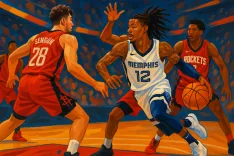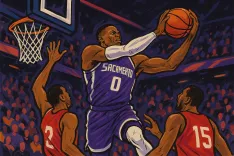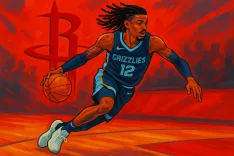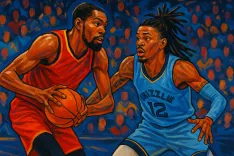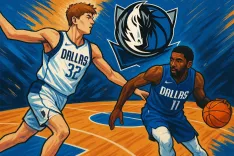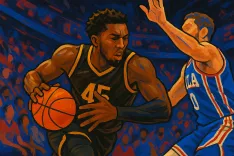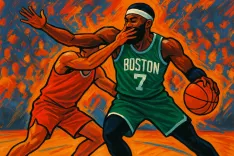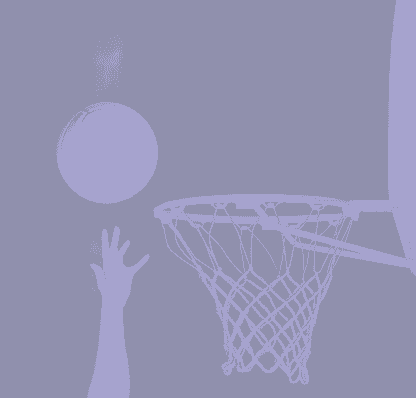NBA Draft Mock Update: Prospect Movement Since Preseason

Moneyline's latest NBA mock draft showcases noticeable shifts when compared to preseason predictions, highlighting the impact of offseason developments. Various prospects have emerged with improved performances, drawing attention in NBA scouting meetings. Conversely, some anticipated one-and-done freshmen have struggled for playing time, and certain upperclassmen have not made the expected strides. This update focuses on players who have significantly shifted from the original October mock draft to the latest iteration.
Key stats for Jeremiah Fears include 16.6 points, 4.3 assists, and a field goal percentage of 46.4%. Initially off the radar in the October mock draft, Fears' rapid development, described as explosive and quick, has made him a notable contender. Despite needing improvement in certain areas, his ability to create scoring opportunities is evident. Fears has exhibited remarkable athleticism, particularly at the rim. His scoring capabilities currently outweigh his playmaking, demonstrated by a 29.9 assist percentage. Although three-point shooting has been a concern, his mid-range efficiency impresses, and his age (turning 19 post-draft) affords him room for growth in decision-making and shooting range.
Nolan Traore, with stats of 10.9 points and 4.8 assists, has seen his draft position dip from No. 5 to No. 13. Traore's early performance suggested upward momentum following the Nike Hoop Summit and U18 European Championships. Yet, concerns regarding his scoring translation to the NBA have emerged after a challenging start in France's Pro A. Shooting inefficiencies, especially from long range (16-of-70), coupled with limited burst, have hindered his effectiveness in the paint. Nevertheless, his 44.5 assist percentage highlights his playmaking acumen, and his youth keeps him in conversations for lottery picks despite emerging questions about his overall potential.
Asa Newell has risen in draft projections, now sitting at No. 7 from an initial position of No. 23. Averaging 15.4 points and 6.8 rebounds, Newell has been a consistent offensive contributor for Georgia. His ability to score efficiently is underscored by his national ranking in dunks. Newell thrives off-ball, maximizing his timing on cuts and utilizing his athleticism effectively. His recent uptick in three-point shooting (6-of-13) supports his development as a shooting threat, while his defensive skills indicate potential for an NBA transition, highlighted by his ability to contest shots and create deflections.
Derik Queen has also made significant movement in the mock drafts, shifting from off the board to No. 17, with solid stats of 16.2 points and 7.8 rebounds. Queen’s adaptable game combines traditional post skills with newfound perimeter abilities, demonstrating a well-rounded offensive repertoire. His hands and strength contribute to his rebounding and inside scoring, while his ability to create scoring opportunities and develop a mid-range shot showcases his evolution as a prospect. Despite questions regarding his physical profile, his updated skill set keeps him in contention as a top-20 pick.
For Jalil Bethea, the season has not gone as planned for the Miami freshman, who has seen his draft stock plummet due to limited team success and inconsistent play. Averaging just 7.1 points, Bethea's potential remains tied to his high school film, revealing flashes of offensive creativity. However, he struggles with shot selection and finishing, resulting in doubts about his readiness as a draft candidate in 2025. Significant improvements over the next two months will be crucial for Bethea to re-enter the conversation for scouts and executive evaluations.
Kam Jones, initially projected at No. 47, has moved to No. 28 in the latest mock draft, posting impressive stats of 19.7 points and 6.4 assists. His assist percentage saw a dramatic increase as he adapted his playstyle to shoulder a larger role at Marquette. As he has transitioned into a setup playmaker, Jones has shown impressive vision and decision-making capabilities, complemented by his reliable shooting and scoring from the rim. While his age could impact his draft stock, the current trajectory suggests potential for a rotational role at the professional level.
Sergio De Larrea's limited playtime hasn’t hindered his impact in Spain’s ACB league, moving from off the board to No. 32 in the latest mock draft. In only 12.1 minutes per game, De Larrea has showcased efficiency alongside his shooting prowess, hitting 17-of-35 three-point attempts. His passing ability in pick-and-roll scenarios has further highlighted his potential as a contributor in transition, making him an interesting prospect to monitor for NBA scouts as he continues to develop.
Rocco Zikarsky's lack of playing time has hindered his development this season, leading to a drop from No. 17 to No. 41. Despite his 7'2" frame, Zikarsky's performance has raised concerns among scouts, particularly regarding his reaction time on defense and ability to challenge shots effectively. His offensive game lacks variety, primarily centered around finishing, which raises questions about his adaptability in the fast-paced NBA environment. As he navigates a challenging NBL campaign, Zikarsky will need to demonstrate growth to regain momentum in the draft conversation.
Miles Byrd, who was previously unlisted, now appears at No. 30, showcasing promising analytics in limited playtime. Averaging 13.4 points per game, Byrd's combination of shooting and playmaking stands out, particularly in dribble jumpers and pick-and-roll scenarios. His lateral movement contributes to his defensive upside, creating intrigue for NBA teams. Byrd’s ability to create offense in high-pressure situations positions him as a developing talent as his collegiate career progresses.
Thomas Sorber has entered the draft discussion at No. 21, displaying strong fundamentals with averages of 14.8 points and 8.5 rebounds. His post-up abilities and playmaking skills set him apart, utilizing his height effectively in Georgetown's offensive schemes. Sorber's impressive defensive statistics provide further credit to his game, particularly with a 9.0 block percentage that aligns him with notable past lottery picks. While outside shooting remains a work in progress, his overall skill set indicates immense potential for NBA success.
Kwame Evans Jr. has seen a decrease in minutes and performance after early anticipation for a breakout season. Now listed off the board, Evans' numbers reflect the struggles he has faced on both three-point and free-throw shooting. With opportunities limited, he will need to demonstrate versatility in games to reestablish his name in draft conversations. Consistency in offensive execution, showcased through previous production, will be critical as he aims to capture NBA attention moving forward.
Danny Wolf's rise in projection, now at No. 34, is grounded in his increased role at Michigan. His ball-handling skills and size (7'0") have made him a unique prospect that intrigues scouts. With an impressive field goal percentage near the basket, Wolf has built a case for his potential as a rim protector and offensive weapon. Despite skepticism around his three-point shooting volume, his recent performance suggests he could provide valuable contributions at the next level.
Lastly, Maxime Raynaud's increased offensive usage has led to improved shooting confidence, moving him to No. 38. Averaging 20.0 points and demonstrating effective scoring both from inside and beyond the arc, Raynaud has gained attention from scouts. While questions regarding his defensive capabilities persist, his progression and ability to stretch defenses with shooting potential make him a prospect to watch as the draft unfolds.
